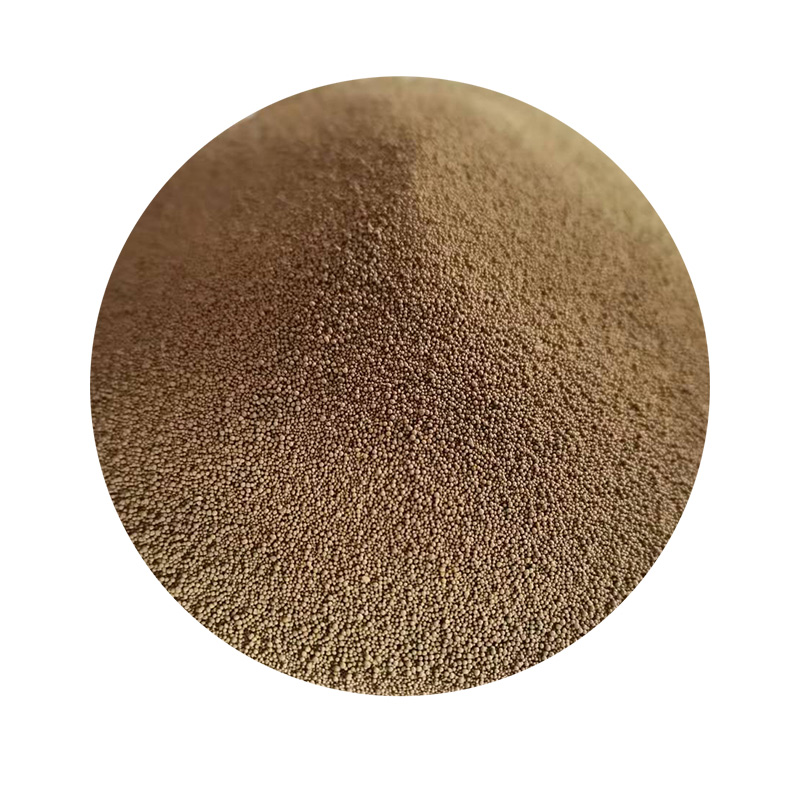Understanding Resin Coated Sand Specifications
Resin coated sand has become an integral material in the foundry industry, especially for processes like shell molding, investment casting, and sand casting. This material is favored for its high dimensional accuracy, surface finish quality, and compatibility with various metal types. To ensure consistent performance and quality, it is essential to understand the specifications associated with resin coated sand.
What is Resin Coated Sand?
Resin coated sand is produced by combining high-quality sands with thermosetting-resin binders. This mixture is then baked to harden the resin and create a strong bond. The result is a sand that maintains its shape during the casting process, offering greater accuracy in mold dimensions and reducing defects in the final product.
Key Specifications
1. Sand Type The primary ingredient in resin coated sand is silica sand, known for its good thermal conductivity and strength. The specifications may further delineate the particle size, shape, and distribution, which all impact the final casting performance.
2. Resin Content The type and quantity of resin used play a critical role in the properties of the sand. Typical resin content ranges from 1% to 3% by weight. It is crucial to adhere to specifications to ensure that the coated sand has optimal flowability and bonding strength without compromising the final product's integrity.
3. Moisture Content The moisture content of the resin coated sand must be strictly controlled, as excess moisture can lead to defects in the mold and the final casting. Specifications typically require a moisture content of less than 0.5%, which can be monitored during production.
resin coated sand specification

4. Thermal Stability The resin should provide adequate thermal stability to withstand the heat of molten metal during the casting process. Specifications may include a thermal degradation temperature, typically above 200°C, ensuring that the sand retains its shape and bond during casting.
5. Strength Properties Compressive strength, tensile strength, and compactability are important mechanical properties that must be specified. Higher strength values indicate better performance in producing molds that can resist the stresses of the casting process. Generally, compressive strengths of 5-15 MPa are considered acceptable.
6. Sand Reusability In many foundries, the economic aspect of using resin coated sand is enhanced by its reusability. Specifications should cover guidelines on how many cycles the sand can undergo without a significant drop in performance, often defined by the resin and sand's compatibility and stability.
7. Environmental Concerns Modern specifications must also take into account the environmental impact of resin materials. Many foundries are moving towards more environmentally friendly resin systems that comply with rising regulatory standards for emissions and health safety.
8. Testing Standards To ensure that the resin coated sand meets these specifications, regular testing should be conducted according to established industry standards such as ASTM (American Society for Testing and Materials) or ISO (International Organization for Standardization). These tests can include evaluating the sand's flowability, strength, and thermal properties.
9. Applications The specific applications should also be noted in the specifications. Various applications may require different properties from the resin coated sand. For example, sand used in high-precision automotive parts will have different specifications than that used for larger industrial components.
Conclusion
In summary, the specifications for resin coated sand are vital for ensuring its performance and reliability in foundry applications. A thorough understanding of the properties outlined in such specifications allows foundries to enhance production efficiency, achieve high-quality castings, and ultimately meet customer demands. As technology and methodologies evolve, so too will the specifications, adapting to new materials and environmental considerations while maintaining the high standards of quality and performance that the foundry industry demands. As such, staying updated on the latest resin coated sand specifications is crucial for any player in the foundry sector.
Post time:11月 . 07, 2024 17:27
Next:Affordable Sand Casting Solutions for Your Custom Manufacturing Needs
